FORMAT:

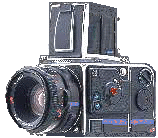 If you are an affluent republican a medium format set up would be cool; a nice Hasselblad, Bronica or Rolliflex 2 1/4 x 2 1/4. It will cost you about the same as a new car by the time you've bought the camera body and all the backs, lenses flash heads and accessories to go with it but if you can afford it, what the hell. A camera system of this type will be gross overkill for our defined purpose but if money is no object, go for it.
If you are an affluent republican a medium format set up would be cool; a nice Hasselblad, Bronica or Rolliflex 2 1/4 x 2 1/4. It will cost you about the same as a new car by the time you've bought the camera body and all the backs, lenses flash heads and accessories to go with it but if you can afford it, what the hell. A camera system of this type will be gross overkill for our defined purpose but if money is no object, go for it.
Personally, I shoot 35mm exclusively and do so for a number of very good reasons: Film and processing are readily available and quite inexpensive (less than $10 per 36 exposure roll). Decent cameras with more features than you will probably ever use don't cost an arm and a leg. With thirty-five millimeter you can produce either prints or slides (smaller pubs usually want prints while larger ones with their own graphics departments often prefer slides; some even scan directly off the negative but are set up to do so only from 35mm negs). And, being the most popular format in the world, 35mm is supported by a plethora of readily available, reasonably priced lenses, strobes, filters and general photographic accessories. Decent cameras with more features than you will probably ever use don't cost an arm and a leg. With thirty-five millimeter you can produce either prints or slides (smaller pubs usually want prints while larger ones with their own graphics departments often prefer slides; some even scan directly off the negative but are set up to do so only from 35mm negs). And, being the most popular format in the world, 35mm is supported by a plethora of readily available, reasonably priced lenses, strobes, filters and general photographic accessories.
FILM vs DIGITAL:

You may be tempted to go digital. I don't recommend it. Not unless you're prepared to part with several thousand dollars because that's what a pro digital capable of producing the same image quality as any average 35mm film camera will cost you. A $400 to $700 digital is typically going to employ a 640 x 480 pixel image sensor, maybe 1024 x 1024. For a 5" x 5" finished photo these sensors produce images of only about 200 dpi (dots per inch). For an 8"x 10" the dpi drops to about 100 dpi. That kind of resolution is OK if you're shooting for the www but it's just not fine enough for print even on pulp. For semi-glossies (like airline and industry pubs and low end travel mags) it is woefully inadequate when compared to the minimum 300 dpi of a 35mm print and the even higher resolutions of 35mm slides. Even worse than their low resolutions, however, are digital's narrow dynamic range, inaccurate color reproduction and introduction of compression artifacts.
Another distinct disadvantage of digital cameras is processing time. Every time you take a picture you have to wait three to five seconds for the camera's computer to process the previous shot before you can take the next one. Those five seconds can seem an eternity in extemporaneous shooting situations like sporting events or even in social settings where you may have only one chance at getting a specific shot.
If you're reading this you obviously all ready have a computer.  Even if you need to submit your pictures in digital format it is my opinion that you are better off shooting 35mm and then scanning the prints onto disk. Six-hundred dpi scanners (all you need for our purposes) can be had today for as little as $59. You'll still get better results than possible with a consumer grade digital. Even if you need to submit your pictures in digital format it is my opinion that you are better off shooting 35mm and then scanning the prints onto disk. Six-hundred dpi scanners (all you need for our purposes) can be had today for as little as $59. You'll still get better results than possible with a consumer grade digital.
APS:

As far as I'm concerned the "Advanced Photographic System" is a crock. All it really gives you is the opportunity to crop your image before you shoot it. Fine for the family picture album but the pub's photo editor is going to re-crop your pictures the way he/she wants to anyway so what's the point? All same-day and one-hour processing services can do 35mm. They can't all do APS. Short deadlines will sometimes preclude your waiting two or three days or even just overnight for central lab APS processing. APS film and processing costs are also about three times that of 35mm. I just don't think it's worth it for what little flexibility it provides.
AUTO or MANUAL:

This question presents a true dilemma. Manual cameras (if you can find one nowadays) offer the maximum level of artistic control but require a fairly high level of technical expertise to use. Today's automatic cameras are virtually point-and-shoot but their built-in strobes impose some fairly dramatic constraints on the photographer's artistic choices. All manufacturers offer top-end cameras with "dedicated strobe systems" that return almost full artistic control to the user. Unfortunately these camera systems, complete with controller and multiple flash heads, are quite expensive ($1250 to $1850).
Working from the assumption that if you were an accomplished photographer you wouldn't be reading these pages I'm going to recommend you start with a fully automatic 35mm camera. 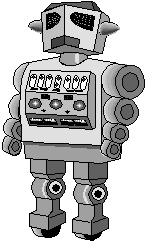 But, because camera auto control systems have some decided weaknesses, I'm also going to recommend you purchase one having manual override capability on all the automatic functions. I'll be more specific on when to use auto and when to turn it off when we talk about shooting situations and technique. But, because camera auto control systems have some decided weaknesses, I'm also going to recommend you purchase one having manual override capability on all the automatic functions. I'll be more specific on when to use auto and when to turn it off when we talk about shooting situations and technique.
Though still not infallible, modern auto-control systems are far more capable than those of even just a few years ago. But of course, some are better than others. The magic words you want to look for in evaluating a camera's automatic functions are "Mode" for auto-focus systems and "Grid" for auto-exposure systems. A good auto-focus system will have three modes: wide, normal and tight. A good auto-exposure system will divide the image in the viewfinder across a multi-celled grid and adjust the camera to correctly balance the entire scene. It will also give you the option of assigning preference to certain areas of the grid when shooting in widely varied lighting situations like strong backlight and a "spot" mode for utilizing the exposure info from the center grid cell only.
Another very nice feature of better auto-control cameras is "dual priority" capability. Dual priority means you have the choice of either dictating aperture and letting the camera control shutter speed or dictating shutter speed and letting the camera control aperture. Single priority auto systems only allow the latter. Again, we'll talk about why this is important in the section on situations and technique.
AUTO-WINDER:

An auto-winder is a motor-driven film advance mechanism. When you shoot with an auto-winder the camera takes the picture and then automatically advances the film into position for the next shot. If you hold down the shutter release button it will keep clicking off shots like a machine gun until you either let up on the button or run out of film. It's a nice feature if you're going to be shooting a lot of action stuff like sports but it does have a down side.  Auto-wind will add to the cost of your camera. It also adds size and weight, not just for the motor but for the larger batteries required to power it. The biggest drawback to auto-wind, however, is that it runs much faster than the recharge cycle of most strobe units. A good auto-winder can bang off three shots per second. Built-in strobes, however, require one to five seconds to recharge between each shot. This renders auto-wind a useless feature when shooting with flash. Auto-wind will add to the cost of your camera. It also adds size and weight, not just for the motor but for the larger batteries required to power it. The biggest drawback to auto-wind, however, is that it runs much faster than the recharge cycle of most strobe units. A good auto-winder can bang off three shots per second. Built-in strobes, however, require one to five seconds to recharge between each shot. This renders auto-wind a useless feature when shooting with flash.
Still, when coupled with a good automatic exposure and focus control system auto-wind will allow you to get shots with available light you might otherwise miss in fast paced shooting situations. The down side is that while auto-wind may allow you to capture some shots you might miss with a manual advance system it will also cause you to miss some shots by using up film at a rate that will force you to stop and reload more frequently. Trust me, the best photo opportunities always occur while you're reloading--it's a law, I think.
Anyway, I'd say get auto-wind if you can afford it. But don't abuse it; an overzealous use of this feature can eat you out of house-and-home in film and processing costs!
AUTO-LOAD:

Get this feature.  I've lost entire photo sessions because I stuffed a new roll of film into my manual loading camera in haste and failed to get the film leader properly scrunched into the sprocket thingie. Result: film does not advance, no pictures are taken! Auto-loaders are also faster to change film with so you will miss fewer shots while reloading in fast paced shooting situations. Auto-load is typically coupled with auto-wind/rewind so you may not be able to get auto-load without also getting auto-wind. If this proves to be the case with what's on the market when you go shopping for your camera then get both. I've lost entire photo sessions because I stuffed a new roll of film into my manual loading camera in haste and failed to get the film leader properly scrunched into the sprocket thingie. Result: film does not advance, no pictures are taken! Auto-loaders are also faster to change film with so you will miss fewer shots while reloading in fast paced shooting situations. Auto-load is typically coupled with auto-wind/rewind so you may not be able to get auto-load without also getting auto-wind. If this proves to be the case with what's on the market when you go shopping for your camera then get both.
TLM:

TLM is the acronym for "Through-the-Lens Metering." You must have this.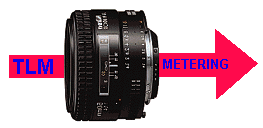 A metering system that reads the light level through a separate viewfinder (or via a "magic eye" on the camera body) rather than through the lens is virtually useless.
A "not-through-the-lens" viewfinder or magic eye is simply not seeing the same thing as the lens. Plus, if you're using any type of filtering you will have to manually compensate the exposure settings for the light lost to the filter. This is a pain in the ass, utterly defeats the whole concept of auto exposure controls and is a process highly prone to error (different filters require different levels of compensation). Do not buy a camera that doesn't do its metering "TLM." A metering system that reads the light level through a separate viewfinder (or via a "magic eye" on the camera body) rather than through the lens is virtually useless.
A "not-through-the-lens" viewfinder or magic eye is simply not seeing the same thing as the lens. Plus, if you're using any type of filtering you will have to manually compensate the exposure settings for the light lost to the filter. This is a pain in the ass, utterly defeats the whole concept of auto exposure controls and is a process highly prone to error (different filters require different levels of compensation). Do not buy a camera that doesn't do its metering "TLM."
FOCUSING AIDS:

If 35mm cameras have an Achilles heel it lies in the fact they are difficult to focus; especially in low-light conditions. This is due to the small size of their viewfinders. A decent 35 will have two features designed to alleviate the problem: A center-of-the-viewfinder "focusing aid circle" and either a "full aperture" button or a feature called "auto stop-down."
The focusing circle uses a prism to split the image in the 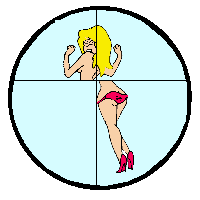 very center of the viewfinder into two parts, one above the other. When not properly focused the image in the upper half of the circle will be offset to the left or right of the image in the lower half of the circle. To get proper focus you simply adjust the control until the two images come into alignment. very center of the viewfinder into two parts, one above the other. When not properly focused the image in the upper half of the circle will be offset to the left or right of the image in the lower half of the circle. To get proper focus you simply adjust the control until the two images come into alignment.
The full aperture button opens the lens to its widest position giving you the brightest, clearest possible image in the viewfinder. After framing and focusing with the button pressed you release it and the lens returns to the proper aperture selected by either you or the camera's auto-exposure system before taking the picture.
Auto stop-down is the better option. This feature holds the aperture wide open until you press the shutter release button, automatically stops down to the proper setting only long enough to take the picture and then returns to the wide open position for you to set up your next shot. Auto stop-down cameras should have the opposite of a full aperture button; something called a "manual stop-down" button. Manual stop-down allows you to momentarily stop your auto stop-down camera down to the shooting aperture to check depth-of-field before taking your picture. I know that's confusing. I'll explain it further when we get into situations and technique. For now just know to look for a full aperture button on cameras that don't have auto stop-down or a manual stop-down button on cameras that do.
Stop-down features are not something the teenage salesman in your local discount department store is likely to know about but, fortunately, there is an easy way to test for them right at the counter. Turn the camera on and look through the viewfinder while adjusting the aperture back and forth from maximum to minimum. If the camera has auto stop-down the image in the viewfinder will maintain the same brightness throughout the camera's entire aperture range. If the brightness of the image in the viewfinder gets brighter and darker as you adjust the aperture from maximum to minimum the camera DOES NOT have auto stop-down. If it doesn't, look for a full aperture button and repeat the test with the button pressed.
If the camera doesn't have one or the other--either auto stop-down or a full aperture button--you are holding a camera that will prove difficult to focus in low light conditions. The center focusing aid is of little use when the view through the eyepiece is too dim to allow visual alignment of the split image.
FLASH TYPE:

You're not going to have a lot of choice here. Automatic exposure systems rely on the built-in strobe to emit a specific amount of light for a specific amount of time. Any deviation from this expectation will result in improper exposure and a spoiled picture. This restriction precludes the use of any supplemental lighting other than that built into the camera itself.
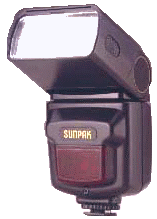
The great disadvantage of built-in flash is that it robs you of much of the artistic control of your photography. All on-camera flash shots have the same "look" to them; that of a single, harsh light coming from the same angle as that of the camera. You can't diffuse (soften) the light of a built-in flash or bounce it off the ceiling or a wall. Nor can you change the angle of the light by moving it off-camera or create a key/fill or three-point effect utilizing multiple heads.
There are only two ways around this problem: A camera having the aforementioned dedicated flash system or a manual camera (or auto with manual override) having a hot-shoe and/or a strobe-sync jack. The former is very expensive and the latter takes you back to needing a great deal of technical expertise. If you ultimately develop a keener interest in photography you'll want to have more control over your lighting than the kind of camera we're talking about allows. If that becomes the case you're going to want a completely different kind of camera anyway so it's really not an issue in the context of this discussion. For our purposes you're pretty much stuck with built-in flash.
Not all built-in strobes are created equally, however, so there are some variables to consider. Foremost among these is power. Flash power is measured via a rather esoteric scale called "guide number." Guide number is the f-stop (aperture) the strobe requires when shooting from a distance of ten feet with ASA 100 film. Remembering that aperture is an inverse relationship (the bigger the f-stop number the smaller the aperture), the higher the guide number the more powerful the strobe. Weak strobes will have guide numbers in the 40 to 60 range. A GN of 40 would require the use of f-4 at ten feet with ASA 100 film. One of 60 would require f-5.6 (there is no f-6) under those same conditions. These large apertures reduce depth-of-field and cause backgrounds to burn out in bright back-light and flash-fill applications (both common when shooting outdoors). You're going to want a camera with a flash guide number of at least 80 to avoid these problems; a GN of 110 would be even better.
Another variable you need to pay attention to regarding flash is the camera's "flash sync speed." Flash sync speed is the fastest shutter speed at which the camera can shoot flash. Some cheaper cameras cannot shoot flash at shutter speeds greater than 60 (one-sixtieth of a second). This is just not fast enough for many applications; most notably the shooting of flash-fill outdoors. Look for a camera with a flash sync speed of at least 125 and, preferably, 250.
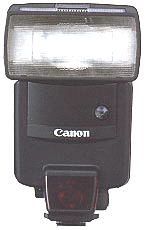
Better flash units have the capability of focusing the width of their coverage in concert with the zoom position of the lens. This is a good feature that effectively increases the strobe's range when zooming in from long distances and broadens its coverage when shooting wide-angle. You should get this capability if you can afford it.
Cycle time is also something you want to be concerned with. Lessor strobes will require up to five seconds to recharge between shots. Better ones will have recharge times of one to three seconds on fresh batteries. Since all strobes suffer lengthening recharge times as batteries wear down one that starts out at five seconds with fresh batteries is going to result in recharge times of eight to twelve seconds as batteries near the end of their useful life. This is unacceptable as it will cause you to miss too many opportunities while waiting for the strobe to recharge.
MIRROR LOCK-UP:

All contemporary 35mm cameras are of the SLR (Single Lens Reflex) type. In a SLR the image in the viewfinder is seen directly through the camera's lens. This little magic trick is accomplished via the employment of a mirror that reflects the light (image) entering the lens up into the viewfinder. When you push the shutter release button to take a picture this mirror swnigs up out ot the light-path and allows the image to fall on the film. Once the film has been exposed the mirror drops back into the down position so you can see through the viewfinder to set up your next shot.
This snapping up out of the way of the mirror can cause some small amount of camera movement that can spoil your picture when using slow shutter speeds or long telephoto lenes. Better cameras will employ a mirror lock-up control to alleviate this problem. This feature allows you to manually swing the mirror into the up position after composing your shot but before releasing the shutter.
CABLE RELEASE FITTING:

Attaching a shutter release cable allows you to take a picture without touching the camera--thus avoiding moving or shaking it when mounted on a tripod. To use a release cable, however, the camera has to have a fitting into which the cable can be screwed--if it doesn't, you are. Look for a threaded hole in the center of the camera's shutter release button. Then ask if this is where the cable release screws in?
LENS SELECTION:

A camera's lens is the heart of the beast 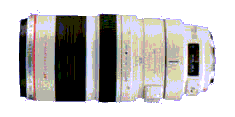 and the single most significant element in determining the quality of images it will produce. Lens quality is directly related to cost and good lenses are outrageously expensive. I have a single 400mm telephoto job that (had I bought it new, which I didn't) would have cost more than all my camera bodies, flash heads and accessories combined--and it isn't even a very good lens by professional standards. Fortunately we're not talking about professional standards here but simply what will prove adequate for shooting semi-pro photos to go along with your articles. Still, lens type and quality should be one of your primary concerns in selecting a camera. and the single most significant element in determining the quality of images it will produce. Lens quality is directly related to cost and good lenses are outrageously expensive. I have a single 400mm telephoto job that (had I bought it new, which I didn't) would have cost more than all my camera bodies, flash heads and accessories combined--and it isn't even a very good lens by professional standards. Fortunately we're not talking about professional standards here but simply what will prove adequate for shooting semi-pro photos to go along with your articles. Still, lens type and quality should be one of your primary concerns in selecting a camera.
The three basic types of lens set ups you're going to run across are: Built-in fixed focal length, built-in variable focal length (zoom) and cameras that, rather than having a built-in lens, are capable of accepting a variety of interchangeable lenses. A $99 camera is likely to have a slow, built-in, plastic lens of fixed focal length. A $500 camera is going to have a faster lens made of glass and have either zoom or interchangeable lens capability. This camera will be far more versatile and will take sharper pictures than the $99 one.
Any camera having a built-in fixed focal length lens is going to prove very limiting under all but the most controlled conditions. You really do need either a good zoom or the capability of removing one lens and slapping on another. A combination of the two is best. By this I mean an interchangeable lens type camera and a full set of twist-lock lenses, one of which is a decent zoom. The problem, of course, is that this is by far the most expensive option. So what I recommend for the purposes we've established here is a camera having a built-in zoom lens with the widest range you can afford.

That range, however, is critical. I've seen a lot of cameras out there with lenses that only zoom between 50 and 90 millimeters. That's not enough for our purposes. First off, 50mm is the "standard" focal length lens for a 35mm camera. What that means is these lenses start at normal perspective and can zoom in to a moderate telephoto perspective. They have no wide-angle capability at all. Secondly, a 90mm maximum telephoto is at least 60mm less than what you will often need. Look for something with a wider range. Don't saddle yourself with a zoom range of anything less than 35mm to 150mm and get 28mm to 200mm if you can afford it. We'll talk about why when we get into techniques.
The other important variable in evaluating a lens is its speed. Speed determines the lowest light level in which the lens can work. The measure of a lens' speed is its maximum aperture size. The f-stop scale for aperture is an inverse one--the smaller the number the larger the maximum aperture size. A lens with a max f-stop of 2.8 is the very least you want. Two-point-four or even 1.8 is preferable if you can afford it--and if you can even find it on a built-in lens camera. Built-in lenses are quite small in diameter compared to interchangeable lenses and therefore collect less light, making them slower.
Lastly, look for a lens that accepts filters. This is typically nothing more than a set of threads on the front of the lens. At the very least you are going to want to keep a cheap UV filter on your camera at all times just to protect your very expensive lens from scratches and dings (especially true for plastic lenses). We'll talk more about the few other filters you may find useful in the section on shooting situations and technique.
Here is what I think you should look for in a 35mm camera:
CAMERA FEATURES SUMMARY CHART:
| FEATURE | MUST HAVE | DESIRABLE |
AVOID |
| Digital | No | No | If under $2000 |
| APS format | No | No | Yes |
| TLM metering system | Yes |
Yes | Everything else |
| Focusing aids | Split-image prism | Auto stop-down | Visual only |
| Auto focus control | No | Yes | No override |
| Auto exposure control | No | Yes | No override |
| Dual priority auto | No | Yes | No |
| Auto wind/rewind | No | Yes | No |
| Auto film loading | Yes | Yes | No |
| Lens type | Zoom | Interchangeable | One fixed length |
| Lens zoom range | 35mm to 150mm | 28mm to 200mm | 50mm to 100mm |
| Lens speed | f-2.8 | f-2.4 or f-1.8 | <= f-3.56 |
| Mirror Lock-up | No | Yes | No |
| Cable release fitting | No | Yes | No |
| Strobe | Yes | Hot-shoe / sync jack | GN < 60 |
| Strobe sync speed | 125 min. | 250-500 | < 125 |
| Dedicated strobe | No | But very expensive | No |
So what's the difference between the $400 camera that meets these requirements and the $600 job? The possibilities include: Plastic body vs. metal body. Single priority auto vs. dual-priority auto. Lower guide number fixed-focus flash vs. a higher GN focusing flash. A flash-sync speed of 90 or 125 vs. 250 or 500. Most importantly; a slower, plastic 35mm-150mm lens vs. a faster, sharper 28mm to 200mm glass lens. The former in each case will be adequate for your needs. The latter will last longer, be slightly more capable, provide you a little more flexibility and control and will take better pictures.
A last word on purchasing a camera:
Putting all the techno-babble aside for the moment, the most important features of your new camera are subjective ones. When you raise it to your eye are you comfortable holding it and looking through the viewfinder or does it make you feel awkward? Are the various controls clearly marked and easy to use? Does it give you the feeling that yes, this is a tool I can use with confidence? Simply put, at a gut level does it feel more friend or foe? You're going to have enough on your mind during your photo sessions: There is never enough time. The lighting conditions are seldom ideal. Some subjects are far more congenial and cooperative than others. You will often find yourself working under constraints imposed by outside agencies like agents or event organizers and sponsors. The last thing you need in these adverse conditions is a camera that demands more of your attention than your subject.
I own a matched pair of Minolta srT 102 camera bodies. These cameras are more than twenty-five years old and have nary a single automatic feature but I would not trade them for the very best modern technology has to offer. They have become trusted friends. When I raise them to my face they feel like extensions of my hand and my eye. My fingers fall to their controls with a familiarity that provides me the utmost confidence in their ability to do their job and in a way that relieves me almost entirely of having to think about the technical aspects of photography. When you find a camera you are comfortable with, one that feels "right" when you raise it to your eye, buy it.
|